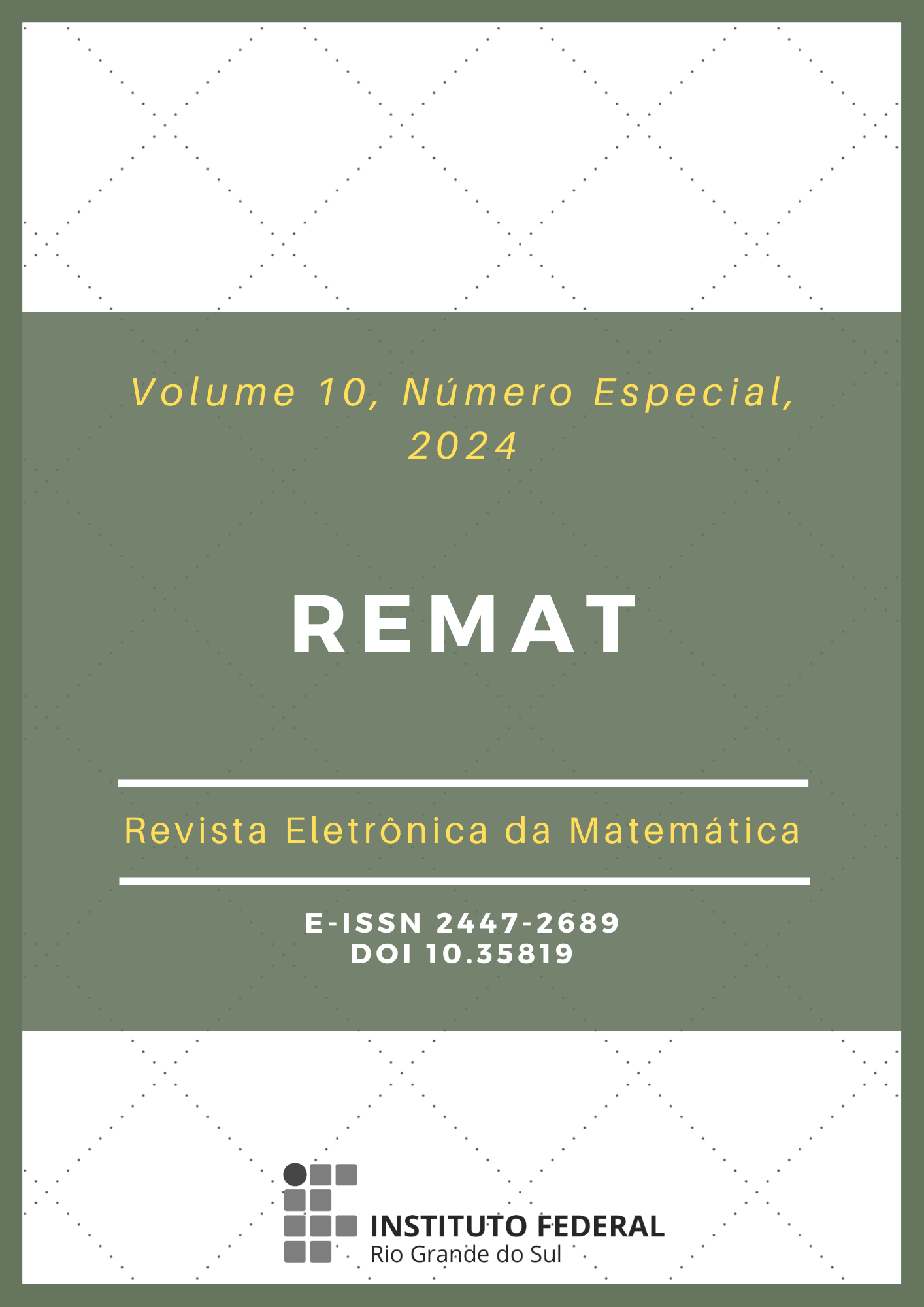Local antimagic chromatic number of firefly graphs
DOI:
https://doi.org/10.35819/remat2024v10iespecialid7067Keywords:
local antimagic labeling, local antimagic chromatic number, firefly graphsAbstract
Graph labeling is one of the Graph Theory research topics that associate a graph element, such as vertices or edges, to integers called labels. There are many papers in the literature that investigate problems related to this topic. Given a connected graph G = (V, E) with at least three vertices, a local antimagic labeling is a bijection f: E -> {1, 2, ..., |E|} which induces, naturally, a labeling of vertices in G, so that adjacent vertices no admit the same label. The smaller number of vertex labels, induced by all local antimagic labels of G, is called local antimagic chromatic number of G. Since 2017, this parameter has received a lot of attention from researchers. In this article, we construct local antimagic labels for graphs belonging to the firefly graph class and provide expressions that determine the local antimagic chromatic number for all graphs in this class.
Downloads
References
AOUCHICHE, M.; HANSEN, P.; LUCAS, C. On the extremal values of the second largest Q-eigenvalue. Linear Algebra and its Applications. v. 435, p. 2591-2606, 2011. DOI: http://dx.doi.org/10.1016/j.laa.2011.03.051.
ARUMUGAM, S.; PREMALATHA, K., BA?A, M.; SEMANI?OVÁ-FE?OV?ÍKOVÁ, A. Local antimagic vertex coloring of a graph. Graphs and Combinatorics. v. 33, p. 275-285, 2017. DOI: https://doi.org/10.1007/s00373-017-1758-7.
BA?A, M.; SEMANICOVÁ-FENOVCÍKOVÁ, A.; WANG, T.-M. Local antimagic chromatic number for copies of graphs. Mathematics. v. 9, n. 11, p. 1230, 2021. DOI: https://doi.org/10.3390/math9111230.
BENSMAIL, J.; SENHAJI, M.; LYNGSIE, K. S. On a combination of the 1-2-3 Conjecture and the Antimagic Labelling Conjecture. Discrete Mathematics and Theoretical Computer Science. v. 19, n. 1, 2017. Disponível em: https://dmtcs.episciences.org/3849/pdf. Acesso em: 27 jun. 2024.
DIESTEL, R. Colouring. In: Graph Theory. Graduate Texts in Mathematics. Berlin, Heidelberg: Springer, 2017. v. 173. DOI: https://doi.org/10.1007/978-3-662-53622-3.
ELUMALAI, A. Graph coloring and labelling applications in computer sciences. Malaya Journal of Matematik. v. S, n. 2, p. 4039-4041, 2020. Disponível em: https://www.malayajournal.org/articles/MJM0S201048.pdf. Acesso em: 27 jun. 2024.
GALLIAN, J. A. A dynamic survey of graph labeling. The Electronic Journal of Combinatorics. p. 1-644, 2023. DOI: https://doi.org/10.37236/27.
HARTSFIELD, N.; RINGEL, G. Pearls in Graph Theory: A Comprehensive Introduction. San Diego: Academic Press, 1990.
HASLEGRAVE, J. Proof of a local antimagic conjecture. Discrete Mathematics and Theoretical Computer Science. v. 20, n. 1, 2018. Disponível em: https://dmtcs.episciences.org/4550/pdf. Acesso em: 27 jun. 2024.
MERRIS, R. Graph Theory. New York: John Wiley & Sons, 2001.
NAZULA, N. H.; SLAMIN, S.; DAFIK, D. Local antimagic vertex coloring of unicyclic graphs. Indonesian Journal of Combinatorics. v. 2, n. 1, p. 30-34, 2018. DOI: https://dx.doi.org/10.19184/ijc.2018.2.1.4.
SETHURAMAN, G.; SHERMILY, K. M. Antimagic labeling of new classes of trees. AKCE International Journal of Graphs and Combinatorics. v. 18, n. 2, p. 110-116, 2021. DOI: https://doi.org/10.1080/09728600.2021.1964334.
UTAMI, W.; WIJAYA, K.; SLAMIN. Application of the local antimagic total labeling of graphs to optimise scheduling system for an expatriate assignment. Journal of Physics: Conference Series. v. 1538, n. 1, p. 012013, 2020. DOI: https://dx.doi.org/10.1088/1742-6596/1538/1/012013.
Downloads
Published
Issue
Section
License
Copyright (c) 2024 REMAT: Revista Eletrônica da Matemática

This work is licensed under a Creative Commons Attribution 4.0 International License.
REMAT retains the copyright of published articles, having the right to first publication of the work, mention of first publication in the journal in other published media and distribution of parts or of the work as a whole in order to promote the magazine.
This is an open access journal, which means that all content is available free of charge, at no cost to the user or his institution. Users are permitted to read, download, copy, distribute, print, search or link the full texts of the articles, or use them for any other legal purpose, without requesting prior permission from the magazine or the author. This statement is in accordance with the BOAI definition of open access.













 https://orcid.org/0000-0002-0893-7426
https://orcid.org/0000-0002-0893-7426


















